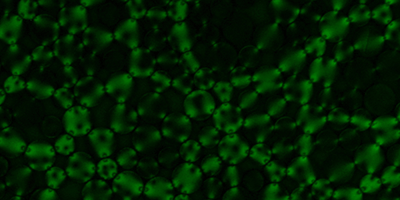Taking the Temperature of Granular Materials
Finding an equation of state for granular systems—like for the ideal gas—would allow researchers to use the tools of thermodynamics to describe these interesting and technologically relevant materials. But unlike atoms in a gas, the particles in a granular material don’t undergo thermal motion, so it’s unclear how to define their “temperature.” In Physical Review Letters, James Puckett and Karen Daniels of North Carolina State University in Raleigh argue that an experimental test of a temperaturelike variable—so far, two have been proposed—is to see if it has the same value in two different granular materials brought into mechanical contact. Their experiment is analogous to showing that a warm object and a cool object in thermal contact settle at the same temperature.
Puckett and Daniels floated roughly a thousand thin plastic disks on an air table, ensuring the disks only rubbed against each other. Disks in the center of the table had their edges wrapped with low-friction tape and constituted the “sub-system,” while surrounding disks were wrapped with rougher tape and acted as the “thermal bath.”
The authors repeatedly compressed the disks until they jammed and then released them to remix. At each iteration they recorded the radial and tangential forces acting on the disks, and the disks’ positions. These measurements allowed them to calculate two temperaturelike variables that have been proposed for stationary systems: compactivity, a measure of how the number of ways to pack the particles changes with volume, and angoricity, which measures how the number of ways to distribute force changes with external stress. The authors find that only angoricity equilibrates between the subsystem and the thermal bath, suggesting it may be the better quantity with which to build an equation of state for granular materials. – Jessica Thomas





